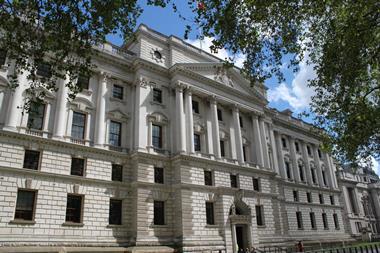The European Central Bank (ECB) is setting up a climate change centre to bring together the work and expertise on climate issues in different parts of the bank, it announced today.
Separately but relatedly, it announced it would be investing some of its own funds in a new green bond fund launched by the Bank for International Settlements (BIS). It also indicated it was exploring a possible adoption of low-carbon benchmarks for fixed income investments in its staff pension fund.
With regard to the climate change centre, it said the decision to set this up reflected the growing importance of climate change for the economy and the ECB’s policy, as well as the need for a more structured approach to strategic planning and coordination.
Announcing the move in a speech today, ECB president Christine Lagarde said climate change affected all of the central bank’s policy areas.
“The climate change centre provides the structure we need to tackle the issue with the urgency and determination that it deserves,” she said.
The new unit will start its work early this year and will consist of about 10 staff working with existing teams across the bank, according to the bank. It will report to Lagarde, who oversees the ECB’s work on climate change and sustainable finance.
According to the ECB, the climate change centre will shape and steer the ECB’s climate agenda internally and externally. Its activities will be organised in five workstreams, focussing on financial stability and prudential policy; macroeconomic analysis and monetary policy; financial market operations and risk; EU policy and financial regulation; and corporate sustainability.
The new structure will be reviewed after three years. In a statement, the ECB said the aim was to ultimately incorporate climate considerations into the routine business of the ECB.
Own funds, staff pension fund moves
The new green bond fund that was announced by the BIS is a euro-denominated fund, coming on top of a US dollar-denominated version launched in September 2019.
The BIS said the two funds would manage some $2bn in green bonds for central banks with the expectation that the funds will continue to grow considerably.
“Central banks around the globe have continued to support this joint green bond fund initiative and channel funds into the green bond market through the BIS,” said Peter Zöllner, head of the BIS banking department.
“In line with the initiative’s objectives, we are continuing our dialogue with green bond issuers and remain committed to supporting the adoption of best market practices, including improved impact reporting, to deepen the green bond market.”
The ECB already holds green bonds amounting to 3.5% of its €20.8bn own funds portfolio. It said that by investing in the new BIS fund ”the ECB contributes, within its mandate, to global efforts to promote environmental objectives – including the EU climate goals – and to combat climate change”.
In its €1.3bn staff pension fund, the ECB last year replaced all conventional equity benchmark indices with low-carbon equivalents, which it said significantly reduced the carbon footprint of the equity funds. It today said it was exploring a possible expansion of the use of low-carbon benchmark indices to fixed income asset classes; a spokeswoman said it could not provide further details at this stage.
Within its multi-trillion-euro bond-buying programme the ECB has been buying securities based on outstanding amounts, but Lagarde has reportedly previously said the ECB would consider dropping this market neutrality principle.
The ECB’s announcements come as in the UK, lawmakers wrote to the governor of the Bank of England, Andrew Bailey, to press him to ensure that the bank’s corporate bond purchasing programme was aligned with the goals of the Paris Agreement. The Environmental Audit Committee also called on the central bank to require large companies receiving taxpayer support via its Covid Corporate Financing Facility to publish climate-related financial disclosures aligned with the TCFD framework.
To read the digital edition of IPE’s latest magazine click here.




























No comments yet